Ford Diesel Failure Points
In many corners of the diesel world, Ford’s Power Stroke name gets a bad rap. But what the competition doesn’t like to hear is the fact that Ford outsells both the GM Duramax and Ram Cummins offerings by a large margin…so it stands to reason that a higher number will be sidelined at some point, right? Below, we’re highlighting each Power Stroke V-8’s most prevalent failure point(s), from the old-school 7.3L to the modern-age 6.7L. Trust us, arming yourself with the knowledge of your particular engine’s common pitfalls can help prevent potential breakdowns and can even aid in your diagnosis of a problem when one surfaces.
7.3L
Camshaft Position Sensor
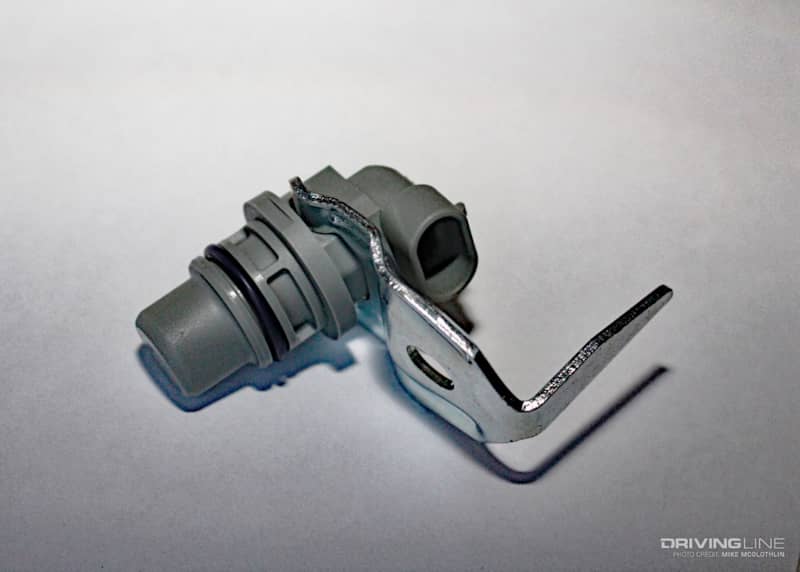
Although their affinity for killing glow plugs can keep them from starting in the cold, there is really only one dead-in-the-water failure that can sideline the simplistic, old-school 7.3L Power Stroke. When the camshaft position sensor fails, the engine can die without warning and not restart. A tachometer that fails to register any rpm as you crank the engine over is a textbook confirmation of a bad camshaft position sensor. If you own a ’94.5-’03 7.3L Power Stroke, do yourself a favor and pick up a spare camshaft position sensor from your local parts house (PN F7TZ-12K073-B) and keep it in the glovebox.
6.0L
EGR Valve
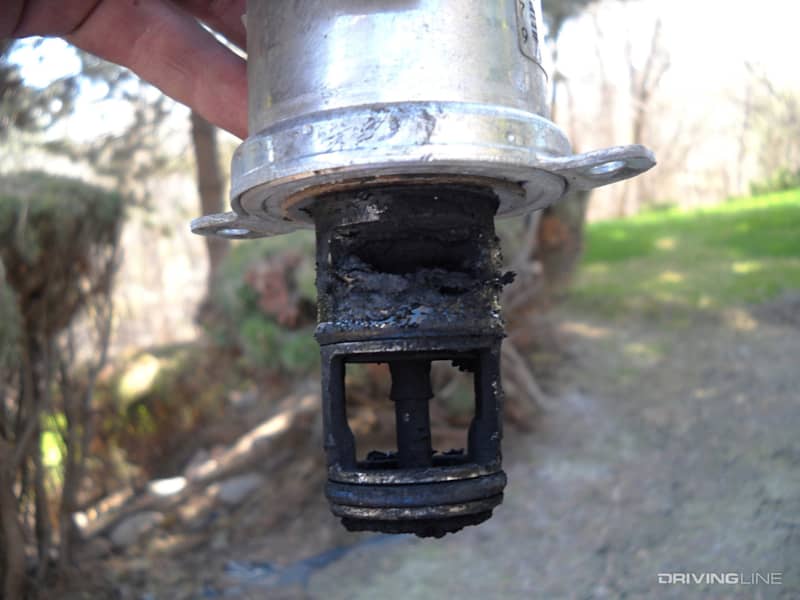
Emissions control components have wreaked havoc on diesel engines for years, but perhaps none more than the exhaust gas recirculation systems (EGR) that showed up in 2003-2004. As the first diesel engine in the pickup segment to be federally saddled with EGR, the 6.0L Power Stroke didn’t fare well. In as few as 20,000 to 30,000 miles, its EGR valve can be so chock full of soot and carbon that it fails to function. An EGR valve that sticks open will produce a P0402 CEL code, while an EGR valve that’s stuck in the closed position will trigger a P0401. The best way to avoid this is to observe Ford’s recommended EGR cleaning intervals.
EGR Cooler
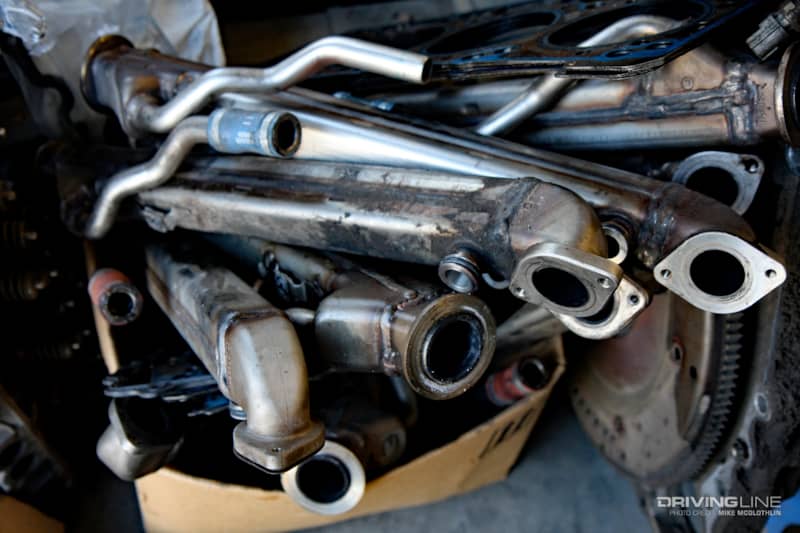
Another infamous EGR-related failure on the 6.0L lies in the EGR cooler. Not only can they eventually plug up from soot and carbon deposits, but they are notorious for rupturing. Worse yet, when they crack internally, coolant can infiltrate the engine’s intake or exhaust tract. The latter form of EGR cooler failure is almost always associated with a plugged oil cooler limiting or completely eliminating coolant flow to the EGR cooler. Without seeing engine coolant, the EGR cooler cannot drop the exhaust gas temperature it sees from as much as 1,200 degrees F to 300 degrees F.
Oil Cooler
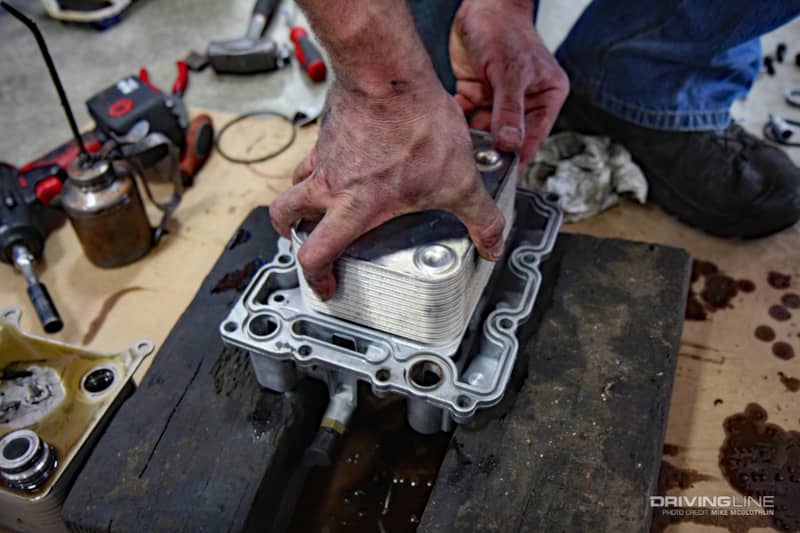
It’s often misdiagnosed but is also the leading cause of the 6.0L’s EGR cooler failures. Why? The tiny coolant passages within the oil cooler clog up over time—usually from casting sand and/or solid deposits from running the wrong coolant—and coolant is no longer able to keep the oil cooler’s operating temp within check. The result is super-heated engine oil, which the 6.0L not only relies on for engine and turbocharger lubrication, but also for its high-pressure oil-activated fuel injection system. And as we already mentioned, a plugged oil cooler also blocks coolant flow from making it to the EGR cooler, so it’s a double-whammy.
Head Bolts
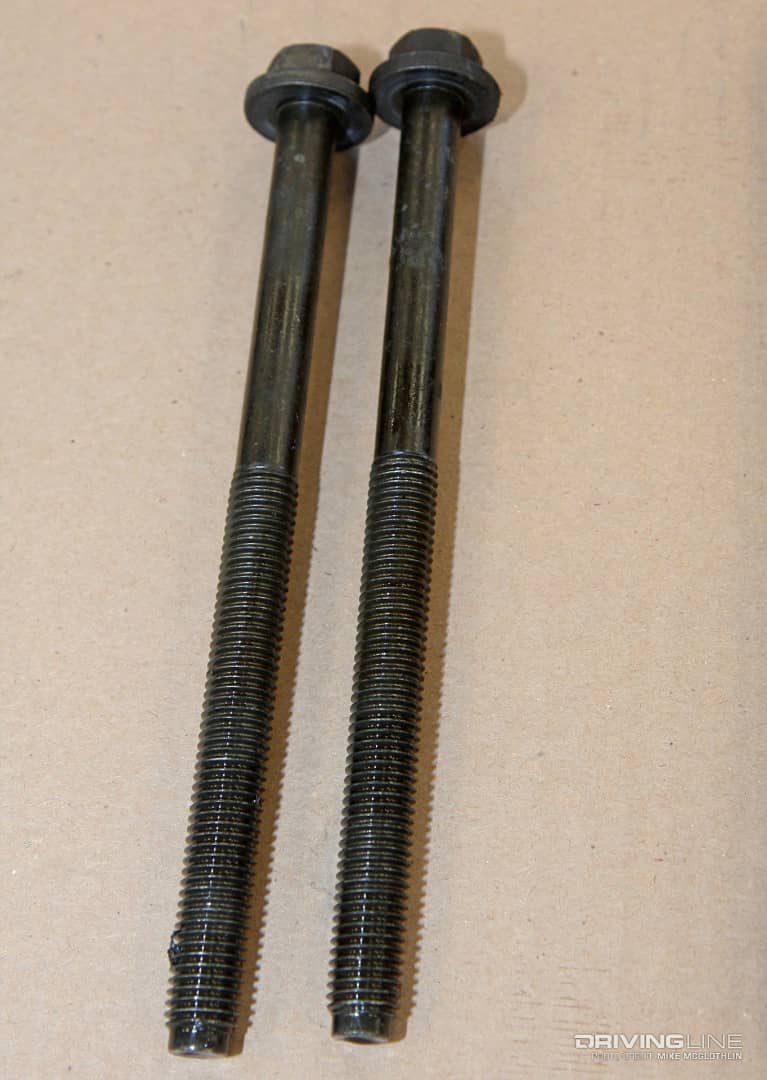
If you asked someone on the street what the 6.0L’s biggest problem is, many would answer “head gaskets.” In reality, it’s this engine’s torque-to-yield head bolts, the bolts’ lack of diameter and the lack of total head fasteners that lead to blown head gaskets. Sporting just four, 14mm diameter TTY head bolts per cylinder (with sharing), they have a hard time holding down the fort and are prone to stretching—even in stock form. Throw additional boost pressure at the engine through aftermarket tuning and you’re practically begging for a head to lift off the block. The best remedy for this is the best-selling fastener ARP offers: head studs.
6.4L
Leaking Radiator
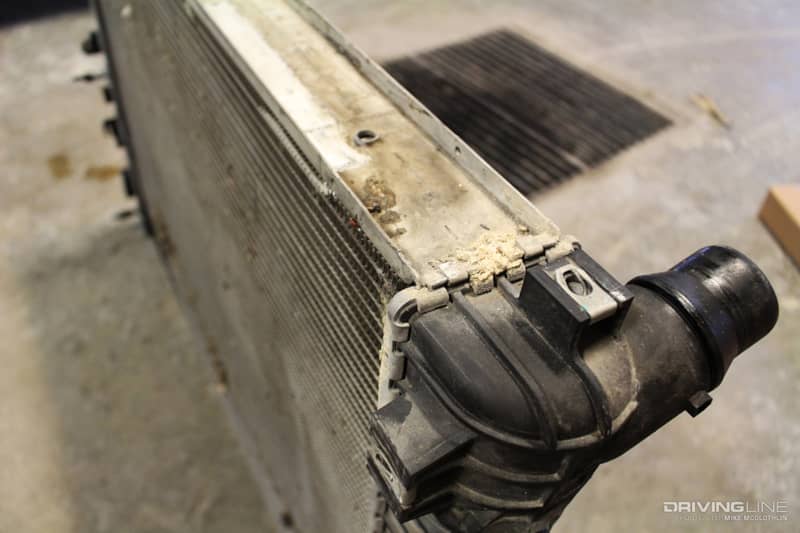
This one won’t necessarily sideline you unless you neglect it long-term, but it is the nuisance that keeps on giving for the 6.4L Power Stroke. It starts when the plastic end tanks begin to separate from the aluminum core and the drip-drip only gets worse with time. Many have attributed the problem with the ’08-’10 Super Duty’s chassis and front-end flex. Either way, no sound solution has ever really been discovered for the issue. Even though Ford released an updated version of the radiator, it’s still prone to leaking.
Cracked Up-pipes
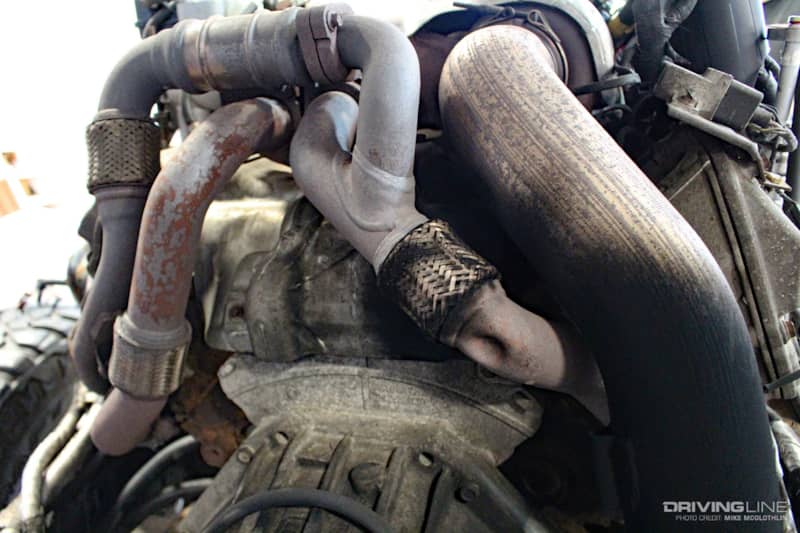
A noticeable noise near the firewall, the smell of diesel smoke and a drop in power will prompt you to look for the answer to this one. It will be abundantly clear when you find soot all over the top of the transmission, transmission tunnel and firewall. Cracked up-pipes are extremely common on the 6.4L and sometimes even fail before the 100,000-mile mark. They crack at the expansion joints (or bellows) located near the top, backside of the engine. Unfortunately for the owner, the cab has to come off to fix the problem.
EGR Coolers
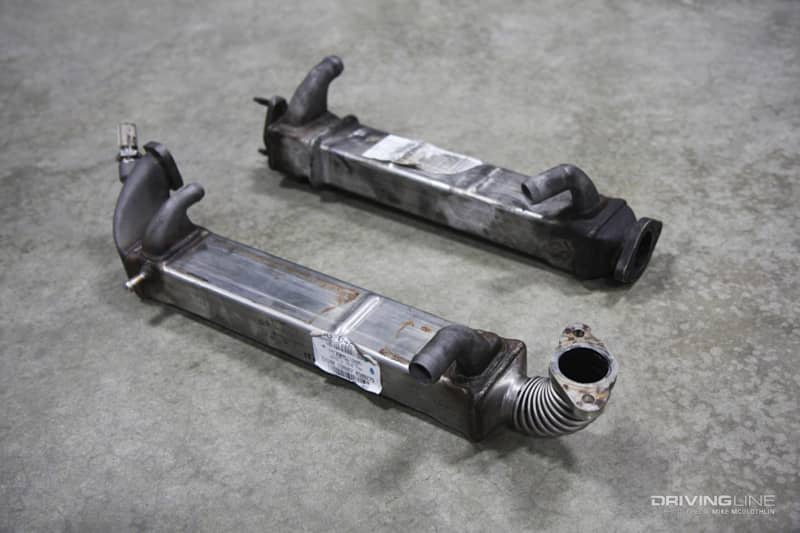
The 6.4L doesn’t eat through EGR coolers quite as fast as the 6.0L, but they do still fail at an alarming rate. The familiar problem of plugging up with carbon and soot typically takes them out, and it’s almost always the cooler that’s horizontally-mounted above the driver side exhaust manifold that kicks the bucket. This is the case because it’s the first EGR cooler to be exposed to the exhaust vacating the engine.
6.7L
Turbocharger
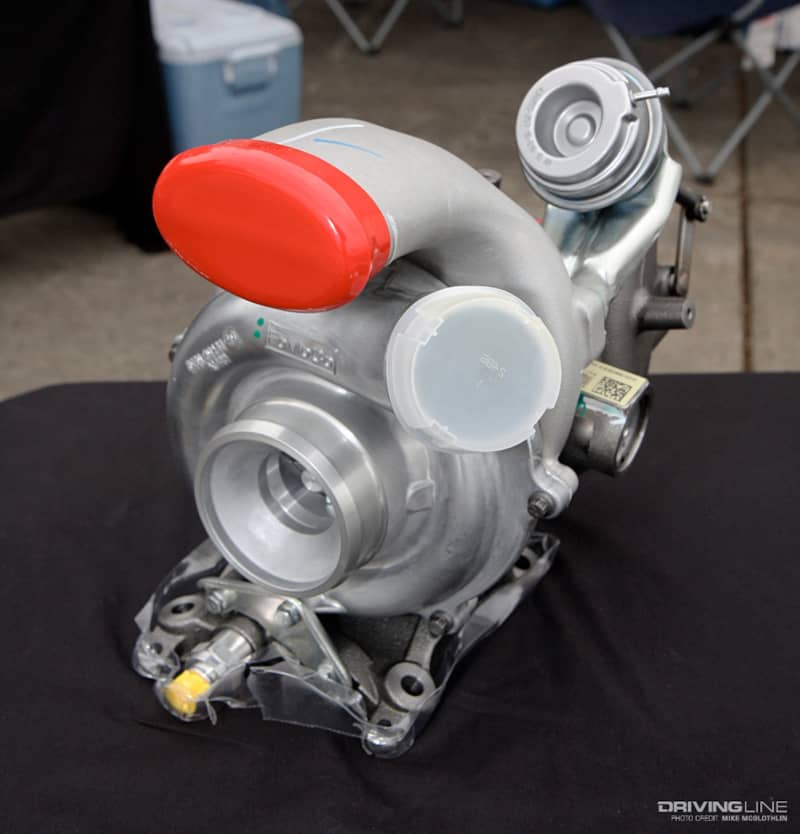
We’re sure it looked good on paper, and it certainly makes the engine a torquey mother, but Ford’s decision to outfit the ’11-’14 6.7L Power Stroke with the dual compressor wheel Garrett GT32 SST VGT wasn’t one of its best moments. Although the turbocharger made use of two compressor wheels, their inducers measured just 46mm. And even though the GT32 SST was wastegated, the undersized 64mm turbine wheel was undersized and prone to overspeeding. When worked hard, this turbo can see a whopping 150,000 to 160,000 rpm worth of shaft speed.
EGT Sensor
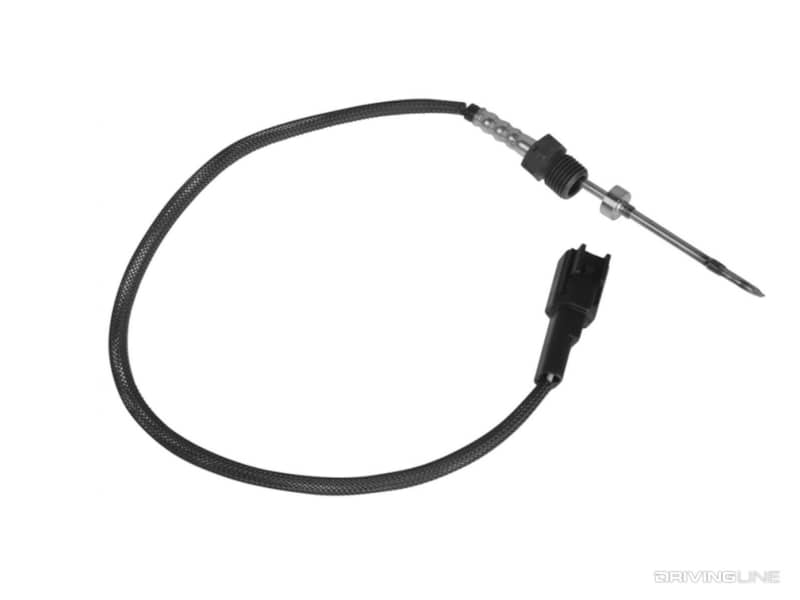
It’s no secret that the diesel particulate filter systems on modern diesels don’t operate trouble-free for very long. Such is the case on the 6.7L Power Stroke, but it isn’t the particulate filter that plugs or the diesel exhaust fluid doser valve that fails the most, it’s the EGT sensors. On each system, there are a handful of sensors and the thermocouples that gather exhaust gas temperature before, within and after the DPF are vital to ensure proper PM emissions are maintained. Just like the camshaft position sensor for a 7.3L, if you own a 6.7L Power Stroke keep one of these bad boys in the glovebox at all times (PN AC3Z-5J213-C).

More From Driving Line
- Looking to talk trash with your Duramax buddies? Arm yourself with the 6.6L GM diesel’s biggest flaws here.







